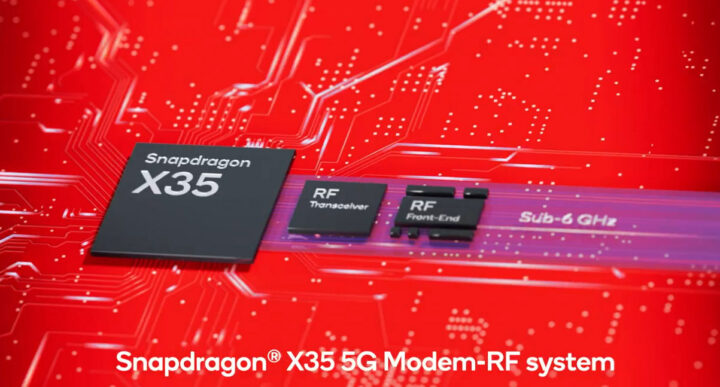Only a few years ago, 5G was only found in premium smartphones, but with the launch of the Snapdragon X35, Qualcomm aims to bring 5G cellular connectivity to wearables, industrial IoT applications, and eXtended Reality (XR) glasses.
The Snapdragon X35 specifically supports 5G NR-Light, aka RedCap, which is described as ” a new class of 5G” that “fills the gap in between high-speed mobile broadband devices and extremely low-bandwidth NB-IoT devices” and delivers link rates of up to 220 Mbps.
Snapdragon X35 modem key features and specifications:
- Cellular Technology: 5G NR-Light, FDD, SA (standalone), TDD, sub-6 GHz, HD-FDD, LTE
- Multi-Mode NR – Sub-6 SA, LTE Cat 4
- 3GPP Release 17 “RedCap” modem
- Number of Antennas: 1 Tx antenna, 2 Rx antennas
- Cellular Modem-RF Specs: 20 MHz bandwidth (sub-6 GHz), 1RX/2RX, 1TX, and Half-Duplex FDD (HD-FDD)
- Calling Services: VoLTE, VoNR
- Peak Upload QAM – 64 QAM
- Peak Upload Speed: 100 Mbps
- Peak Download Speed: 220 Mbps
- Peak Download QAM: 256 QAM
- Location – GNSS Frequency Support: Dual (L1/L5)
- Advanced technologies
- Qualcomm QET5100 Envelope Tracking
- Qualcomm Smart Transmit Technology
- Qualcomm 5G PowerSave Gen 4
- Qualcomm 5G Ultra-Low Latency Suite
- Mobility – Support of idle and connected mode mobility
- Coexistence – Compatible with legacy 5G and 4G networks
- Coverage Enhancement – Support for uplink slot aggregation
The company also announced the Snapdragon X32 5G Modem-RF System described as “a modem-to-antenna solution built to lower complexity and fuel cost-efficient NR-Light devices”, but we don’t have much information about it at this time. To find out more about both the Snapdragon X35 and X32 5G NR-Light modems, you’d need to be a member of a verified company and create a Qualcomm ID or log in to your existing account.
We do have some extra details about availability with customer sampling of Snapdragon X35 and X32 set to begin in H1 2023, and commercial devices expected by H1 2024. A few more details may be found on the product page and the press release.

Jean-Luc started CNX Software in 2010 as a part-time endeavor, before quitting his job as a software engineering manager, and starting to write daily news, and reviews full time later in 2011.
Support CNX Software! Donate via cryptocurrencies, become a Patron on Patreon, or purchase goods on Amazon or Aliexpress





